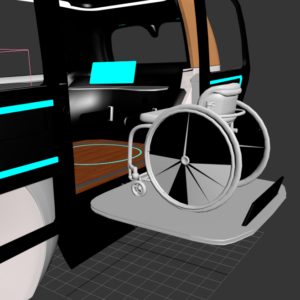The Americans with Disabilities Act of 1990 (ADA) is the landmark civil rights law that addresses the rights of people with disabilities. Title II of the  ADA prohibits discrimination on the basis of disability in public transportation services, such as city buses and public rail (subways, commuter trains, etc.). Under the ADA; all new vehicles used in public transit must be accessible; key existing rail stations and all new rail stations and facilities must be accessible; and transit operators must provide paratransit (on-demand, door-to-door) services for those who cannot use available mass transit. Paratransit service is crucial for people with mobility challenges who rely on that mode of service.
ADA prohibits discrimination on the basis of disability in public transportation services, such as city buses and public rail (subways, commuter trains, etc.). Under the ADA; all new vehicles used in public transit must be accessible; key existing rail stations and all new rail stations and facilities must be accessible; and transit operators must provide paratransit (on-demand, door-to-door) services for those who cannot use available mass transit. Paratransit service is crucial for people with mobility challenges who rely on that mode of service.
Paratransit service is crucial and the failure to show up or to provide effective service not only causes frustration but also adversely impact health appointments and employment for those individuals who are employed. Paratransit is an alternate mode of transportation, most often provided by minibuses, which provides door-to-door shared rides upon request by eligible users. Lack of enforcement is one of the biggest obstacles to realizing the goals of the ADA. There are no “ADA police,” so transit operators can often shirk responsibilities without repercussions.
ADA enforcement is complaint-driven, which is burdensome for people with disabilities, especially in remote rural communities. Additionally, problems persist with the maintenance of accessibility equipment such as lifts, securing mobility equipment such as wheelchairs and scooters. In some cases, drivers do not stop for people with disabilities. Drivers need more training on securing equipment, calling out stops, and following procedures regarding passengers with disabilities.
In addition, because the ADA only addresses public transportation, few transportation options exist for people with disabilities where no public transportation is available. In some areas, such as in rural communities, insufficient funding has left people with disabilities with little or no transportation options.
In urban areas where individuals often rely on transit taxis, a lack of requirements has meant very uneven progress. Transportation and mobility play a vital role that impacts the lives of people with disabilities, including problems with service quality and capacity limitations. Specific transportation problems include:
- Extemely long delays for return trips
- Restrictive eligibility criteria
- Unfair trip denials
- Tardiness or failure to show
- Slow service en route
- Inefficient and unfriendly telephone reservation systems;
- Inaccurate information in scheduling
- Failure to respond to complaints
- Lack of training for drivers
- Drivers’ lack of respect for passenger